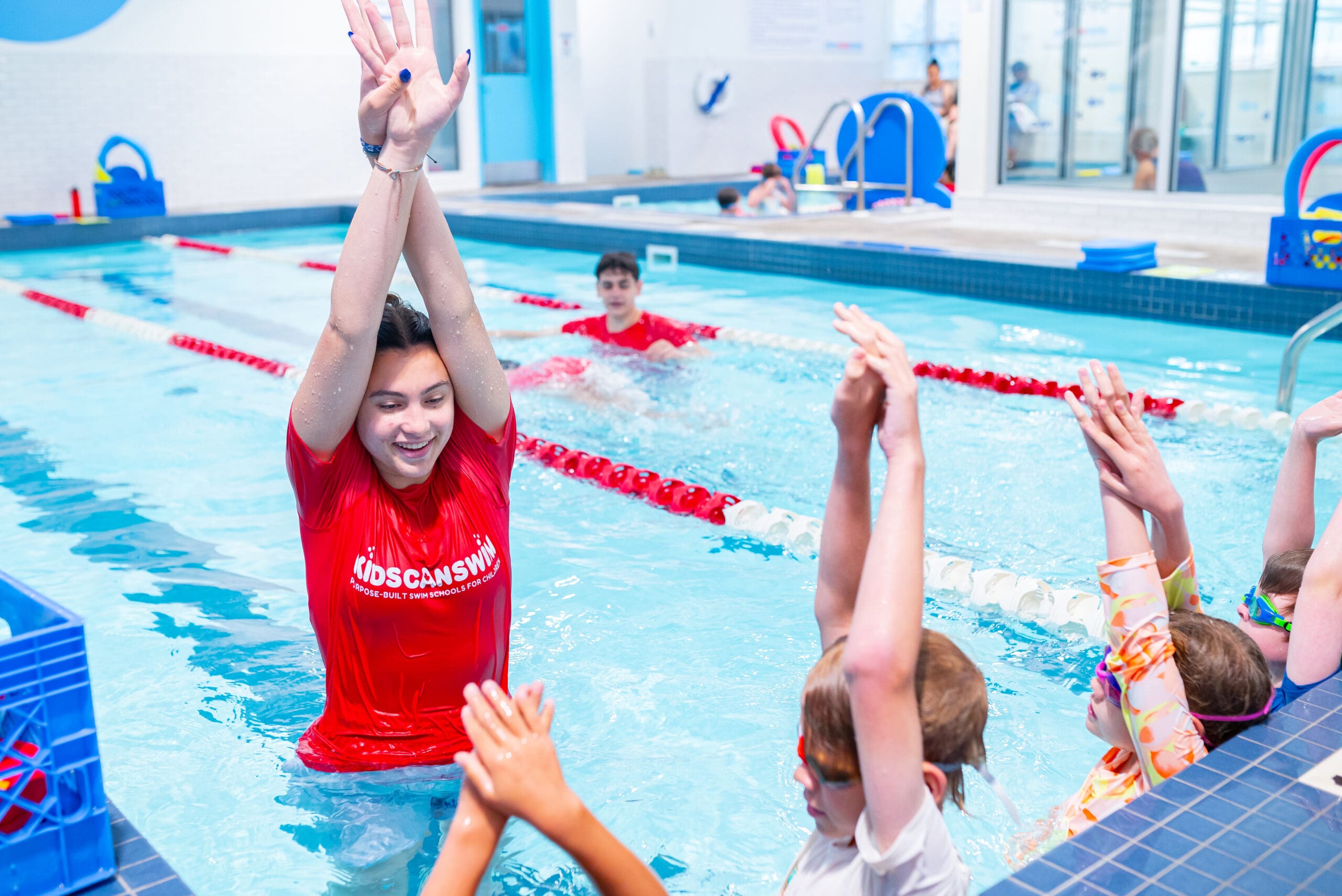
Water safety starts with swim lessons. Learn how structured swim education builds life-saving instincts, teaches risk awareness, and empowers children to stay safe in and around water.
The First Step Toward a Safer Childhood
When most parents think about water safety, they imagine fences around pools or life jackets on boats—and while those are vital, they’re not enough on their own. Real water safety begins inside the child, with the skills, awareness, and confidence to make smart decisions around water.
At KidsCanSwim, we believe swim lessons are not just an extracurricular—they’re the foundation of a safe aquatic life. In this post, we’ll explain how consistent swim education becomes the base layer of protection, supporting all other safety efforts.
1. Swim Lessons Teach Real-World, Functional Skills
A solid water safety foundation is built on more than freestyle and backstroke. That’s why our curriculum focuses on functional survival skills, including:
- Rolling onto the back to float and breathe
- Finding and gripping the pool wall
- Kicking to safety
- Submerging and surfacing with control
- Learning when to call for help and how to stay calm
These techniques are taught in progression, starting with assisted movements in infants and growing toward full independence as children build confidence and strength. The end goal is to create swimmers who don’t just survive in water—they understand how to manage themselves in a variety of situations.
2. Risk Awareness Starts Early
Water safety is not only physical—it’s also psychological. Children need to learn that water is fun, but also unpredictable. Our instructors use positive reinforcement to teach kids:
- That it’s OK to say “no” if something feels unsafe
- To always ask an adult before entering water
- How to tell when conditions (waves, current, depth) aren’t right
- The difference between “playing in water” and “being in control in water”
These insights help children develop a healthy respect for water—a mindset that stays with them far beyond the pool.
3. Swim Education Supports Safety in All Water Environments
KidsCanSwim prepares children not only for the pool, but for a lifetime of aquatic experiences. Our goal is to equip them with core safety principles that translate to:
- Beaches (waves, uneven terrain, open water)
- Lakes and rivers (cold water shock, currents, floating docks)
- Public pools (depth variations, diving risks, distractions)
- Waterparks and splash pads (slippery surfaces, sensory overload)
Rather than relying on setting-specific rules, our swimmers learn universally applicable behaviors—how to observe, assess, and act with intention around water.
4. Water Safety Skills Stay for Life
Unlike some skills that fade with time, the ability to swim and stay safe around water tends to stick with children who start early and learn consistently.
A strong foundation of:
- Comfort in water
- Basic swimming movements
- Awareness of surroundings
- Calm reaction in emergencies
…becomes a lifelong asset. Whether your child grows up to enjoy swimming, boating, surfing, or just vacationing near water, these skills can provide peace of mind for years to come.
Teaching a child to swim isn’t just about reaching the other side of the pool—it’s about building a lifelong foundation of safety, confidence, and preparedness.
Water can be unpredictable, but your child’s instincts don’t have to be. By enrolling in swim lessons, you’re giving them the tools to navigate water with confidence and care, from toddlerhood to adulthood.
